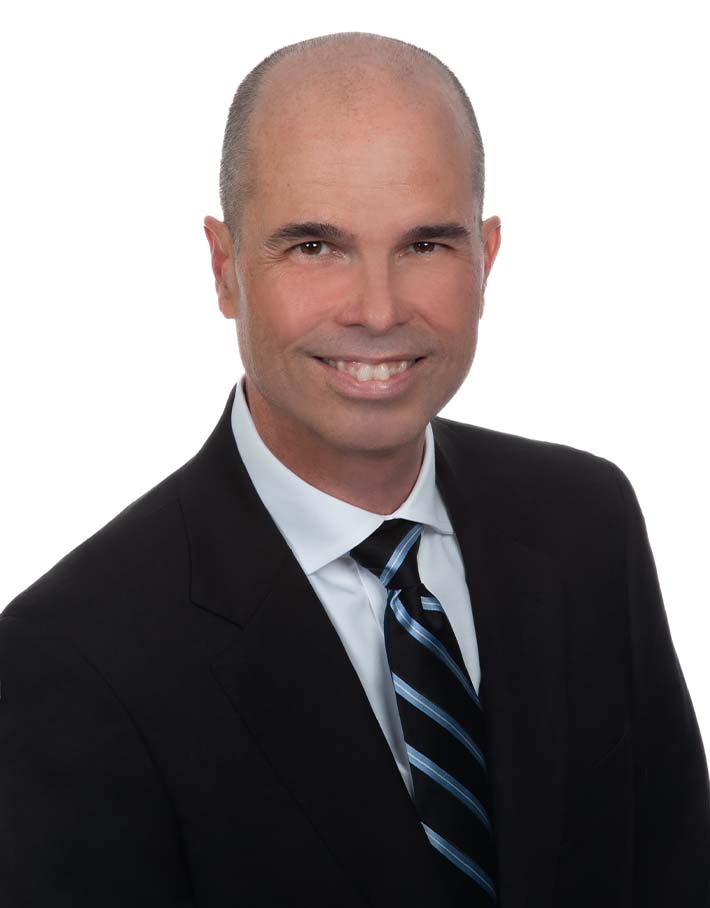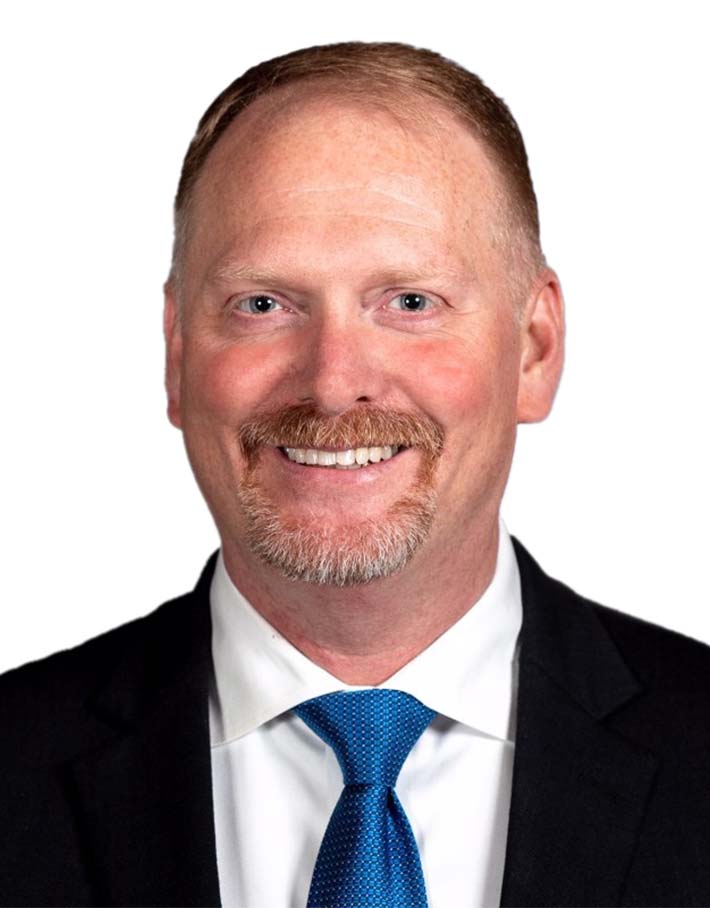Leadership – Connecting the Dots in Today’s Business Environment
By Bill Davis, Buddy Doyle and Ed Wegener
Subscribe to our original industry insights
Recently, Oyster Consulting industry leaders Buddy Doyle, Bill Davis, Jeffrey Hiller, Jim Roth and Ed Wegener took some time to discuss what firm executives and decision makers should be focusing on in today’s volatile and changing business environment. With their decades of experience in compliance, operations, and growth strategies, they provide insight into improving your bottom line, updating and improving your planning services to meet client needs, risk levels and employment challenges, managing your cybersecurity and third party vendors in a pandemic world, vendor support , controls, testing and disclosures.
Contact us now or call (804) 965-5400 to learn more about these topics and how Oyster can help your business thrive.
Transcript
Transcript provided by Temi transcript services
Oyster: Welcome to this week’s serving of Oyster Stew, a mix of financial services, commentary, and insights. Each week, we’ll discuss what is happening in the industry, based on what we see as we work with regulators and clients. We hope you come away with the knowledge and tools to help you make the best decisions for your firm’s future.
Buddy Doyle: Hi everybody, I’m Buddy Doyle, Chief Executive Officer of Oyster Consulting, and I’m pleased today to introduce some of our newest team members that have joined us during this pandemic while we’ve been building strength and thinking about the things that our clients need the most. We’ve made a lot of choices here to add to our team, to target some resources towards our client base. I’m really excited today to introduce to you Jim Roth, Bill Davis, Ed Wegener, and Jeffrey Hiller. We’re going to start today with Jim Roth, who joined us from Pershing. We’re excited to have you here. Maybe you can talk a little bit about some of the challenges that our clients are facing and some of the things that they really ought to be focusing on and thinking about, particularly in light of the pandemic and this new world that we’re working in.
Jim Roth: Thank you, Buddy. It’s a pleasure to join you today. You know, to say that businesses today are operating in an unpredictable environment. That would be an understatement amid the pandemic and its impact on the industry. We’re all facing elevated levels of instability pressure, and of course, anxiety. But I think you’ve got to ask yourself the
question: “What is the new normal and what will it look like?” The immediate challenge may be meeting the heightened client service regulatory and reporting demands, especially if social distancing limits to face-to-face interaction. I think it’s also important to help your employees through what continues to be a stressful and uncertain time. Your firm may have to put temporary measures in place to get through the immediate crisis to a more sustainable footing. Longer term considerations should include how to accelerate digital and workforce transformation while meeting the changing expectations of investors, your advisors, and your employees.
Further questions you may address could be how to align the cost structures and revisiting any operational efficiencies. And in a few moments, my partner Bill Davis will share his observations in this area. The new normal may make customer engagement harder yet. It’s more important than ever to sustain relationships, as this crisis may have unsettled many of your investors. We’ve also seen that regulators will want to ensure that investors understand what they’re buying and whether it matches their needs, which can be difficult to do when interactions is strictly digital. Firms will need to step up their capabilities to fulfill this priority. You know, I think this crisis has heightened the need for clarity on your firm’s strategic plans about where and how you compete. This means that you may have to decide whether it’s to be a scale or a niche player. You may also have to consider whether it’s best to build, buy, or borrow the capabilities you need.
You know, building capabilities can be difficult when you’re trying to move quickly. Buying can be costly though. Market movements can bring more targets to a more affordable range, and borrowing through partnerships and collaboration could help you strengthen your capabilities and meet your changing investor demands without imposing prohibited, extra costs. In some cases, for the sake of ensuring business continuity, it may be necessarily to reduce investments, freeze hiring, or even avoid entering new markets. But in other instances, these short term tactics may have repercussions on your longer term strategy. So it’s always important to use a broad lens and a balanced perspective. We know from experiences at Oyster that organizations with a clear outlook and a proactive strategy are more resilient and usually earn a competitive advantage over the long-term. Buddy, I’ll turn it back over to you.
Buddy Doyle: Thanks, Jim. I think, wow, you just mentioned a few things that really struck me: unsettled investors and how to meet their needs, taking a longer-term view in terms of what you’re doing and what you’re trying to accomplish, and having that balanced perspective. Those are all things that are really kind of important, particularly in this environment, along with the digital tools in order to serve your clients’ needs and really keep your employees and team safe during this time. Bill, you’ve been at Wells Fargo advisors and Folio, and you’ve kind of been in the industry for a good while. Maybe you could talk a little bit about some of those challenges of meeting the investors’ needs and aligning to their risk profiles, and in that longer-term view and in a time where short term, it just can be really unsettled.
Bill Davis: Thanks, Buddy. One of the things that we’re working on here is advisory and planning services to help firms execute on those, how to become more effective and efficient at how you can put together a client’s plans. Many firms want to increase planning and the FAs typically don’t want to take the time to do that, or there’s difficulty with getting buy-in there. So there’s been some significant challenges there. One of the things we’ve heard and read is that about 93% of advisors say that clients have contacted them about their retirement plans. Firms are looking at the challenge of beefing up planning so they can help clients move in the right direction. Pair planning is one thing that that’s been critical in the industry, and talking to our partners, we’re seeing that it’s really taken off. There has been a huge interest in firms across the country in trying to increase assets under management, to be more efficient in how they build plans.
That’s something that we’re really looking closely at – helping clients gather data, reorganize the data, review assumptions, input information, develop a target plan, review those target plans, and work closely with the FAs. Because we have a risk and compliance background, it’s something that we really are interested in looking at and working closely with, with everyone on and doing the research, with others in the industry to ensure that we’re on target with things like software selection. There are many companies out there who offer planning services.
Something that we can also help with is how you select your software, what’s best for the culture and the best for the fit for your firm. And then one of the other things firms seem to struggle with is, once you choose software, “how do I transition?” And “I moved from one software to the other – if I’m currently with the software planning service, and I want to move to another one, how do I effectively do that?”
There’s some pieces of that, that can be uploaded automatically, but there are other pieces that can’t be uploaded and that’s extremely challenging for firms as they move to a new vendor. Also the change of culture for the firm as you move from one vendor to another. The last thing, one of the things we really look at and are very interested in, is around mentoring, and helping firms understand the planning software, how better to use it, how to be more effective. How can you effectively use the software, help the FAs as they’re putting together the plans through pair planning to give them more time, to help increase assets under management, identify those assets that are held away and create a culture that you can bring those assets in.
Covid-19 has disrupted personal lives and businesses creating a challenging environment in the retirement planning industry. Some of the changes are irreversible. Small business owners have borne the brunt of the disruption. Valuations have fallen, roles for retirement planning have changed, health insurance prices are expected to go up. Life, disability, and long-term care insurance are having increases in product pricing. When it comes to retirement planning tools, it can be very complex and cumbersome to deal with an influx of clients concerned about where they need to go from here. So Buddy, that’s part of what we’re really looking at today and part of what I’m excited about and working at Oyster, working with the great team here to help folks with the planning and advisory service piece.
Buddy Doyle: These planning tools, they’re very powerful tools, but they have assumptions. As Bill mentioned, they’re all built on some assumptions about how the market’s going to perform, but with all the clients reaching out today, and so many clients reaching out to talk about their retirement plans and their concerns about that. As Jim talked about having the right tools, digital tools to engage with your clients, I just keep thinking about the unemployment levels right now, and the risk in this market and all those 401Ks that are sitting there and investments that haven’t had a plan around them, and to take these plans and think about life goals and longer-term goals is really important in today’s world. But to do that properly, I think there is a regulatory risk that comes along with some of this.
You mentioned conversions and getting data in the wrong way. The last thing you want is bad data to lead you to a bad plan, that’s an outcome where your client isn’t successful. But there’s a lot of different risks that come along with serving your clients today in this environment. Ed, maybe you could talk a little bit about some of the regulatory views on planning and serving clients. I know we’ve got this big Reg BI thing that is now out there in the world and has been for six weeks. Ed’s joined us from FINRA, which was his prior employer, and they have perspectives from a regulatory perspective on these topics. Maybe you could share a little bit about what our clients could be thinking about.
Ed Wegener: When I listen to what Jim and Bill talked about, it’s pretty dizzy, right? And you think about where we’re at right now. It’s an extremely difficult time to navigate on top of all the normal concerns that you deal with on a day to-day basis. As Jim mentioned, there’s these significant challenges just in dealing with impact that the pandemic is having, but at the same time, other things don’t stop. You had mentioned Reg BI for retail firms. This is one of the biggest changes to the standard of care, to conflict mitigation, to disclosure requirements, that firms have had in decades. At the same time this has happening, there’s major changes to the reporting requirements with CAT. And then, as everybody had mentioned that the increasing reliance on technology tools and moving to digital, it increases the vulnerabilities that firms face in terms of things like cyber-attacks and intrusions, and all of this is happening all at the same time.
It’s really like an inflection point. While I think that regulators are sensitive to the issues and the challenges that firms are facing these days, at the end of the day they still expect firms to be vigilant and ensuring that these risks are managed and that investors are protected. So firms are really going to need to make sure that they’re able to adapt their processes, their systems, their controls for this new environment. And some of this might be temporary. In other cases, it’s not temporary. This is what everybody’s saying is the new normal and firms are just going to have to make sure that they’re able to adapt to these changes, while at the same time making sure that they’re keeping all their other operations going as usual. The ability that firms are going to need to be able to effectively operate and monitor and task remotely now is going to be a must. I think that’s one of the reasons that I’m excited to be here with Oyster because I think that the breadth and the depth of experience that we have can help firms through this, but also the ability that we’ve created through the technology and tools that you had mentioned in your recent blog posts, I think will really help position us to be able to support firms as they do things more remotely now.
Buddy Doyle: In this remote world and using tools like Bill’s talking about brings that out a little bit – our cybersecurity risk, and we’re a third-party vendor to firms in the financial services industry, both through software and consulting, and we get kind of run through the ringer quite a bit, which is great. We feel good about that because we know our clients are listening to us when they implement controls, even when we’re the victim of them, as far as dealing with routine questionnaires and things like that. But one of the things about this world is there is an entire eco-structure built around supporting organizations through the use of third-party tools. I know that could be everything from your clearing provider to your custodian, for your advisory business, to your commission systems. And Jim, I know you’re doing a lot with organizations to evaluate how to benefit from third party providers. Can you talk a little bit about some of the work that you’re doing in terms of vendor selection and the approach to that?
Jim Roth: Yeah, Buddy, I appreciate this question because we have leveraged third party relationships over the years. Think about it for a moment. Businesses increasingly don’t do it alone. You know, over the years we’ve seen firms leveraging a network of third-party relationships, some being strategic and some not, but these general relationships can provide organizational value and clearly a competitive advantage. I’d say to you over the past five years, the use of third-party relationships has increased exponentially, but you also have to pause by doing this by saying organizations could also be exposing themselves to a high-risk profile like never before. So you’ve got to be careful with that one way or the other. It could cause you a financial or a reputational risk. Clearly, as Ed can attest, and Jeffery, there’s a legal and regulatory risk involved into this as well, and obviously there’s an operational risk. Think about for a moment: if your system was down and it caused a disruption in your operations. But my point to you is that there’s just a wealth of information from many of these third-party relationships. And I think you do yourself a disservice if you didn’t reach out to those third-party relationships and try to leverage their talent and their expertise. It’s out there. You should take advantage of it if you can.
Buddy Doyle: Yeah, it is definitely out there. And I think too, the way you take advantage of that can be important as well. And Jeffrey, I know you’ve spent a lot of time working with advisors and you’ve lived this conflict management life that Reg BI has put on broker-dealers over the last six weeks, but you’ve been obviously living that your entire career with conflicts needing to be disclosed. One of the things that I often think about is custodians and clearing firms, they offer services for you. There’s ways to disclose that, that they will keep you safe, but Jeffrey, maybe you could talk a little bit about some of the controls around disclosures and conflicts and some other things that our clients could learn from, from your experience, both at the SEC, as well as being a CCO for some large organizations.
Jeffrey Hiller: Thank you, Buddy. I think what I emphasize here that everybody uses vendors and service providers, and the SEC, as well as a lot of states, require firms to conduct oversight of their service providers to ensure they’re carrying out their contracted services effectively. And in the manner intended service providers can be custodians, pricing services, tech support, proxy, voting services, and other services that you use to manage your counts. Due diligence of these service providers should include a review of their policies and procedures, the effectiveness of their services and other issues such as private for privacy protections that they may provide in SEC-speak. You would say that you want to ensure that the vendors have in place policies and procedures designed reasonably to prevent and detect violations of the federal securities laws and state laws. In addition to reviewing their policies and controls, you should also look at their disclosures as well as testing where appropriate. In this age and the circumstances we’re in, you have to be creative in terms of what you need and how you can test service providers and vendors.
Jeffrey Hiller: You should oversee them and review them at least annually. More frequently if red flags arise. These reviews can take different forms. It can be done on site as circumstances allow. Some may present more risks than others and require more oversight. And finally, these reviews should be on your compliance calendar and can be done over the course of the year. So the different vendors are reviewed at different times but can be rolled up into your annual review. These are really critical, and I’ve experienced in the past where a vendor has some red flags or had an exception. You really have to stay on top of this and make sure you know your vendors.
Buddy Doyle: Yeah, I think knowing your vendors is really, really important. And as a vendor, we love to know our clients. We do much better serving our clients the more we know about them, the more we’re able to help them define that reasonable or appropriate standard, right? The regulators throw out “reasonable,” and it’s really hard to know what that Goldilocks standard looks like. Is it too big? Is it too small? Is it too hard? Is it too soft? In order to know that, we have to understand our clients, which is why you guys are here. And we’re excited that you are, to be able to wrap ourselves around our clients, understand their strategies, understand how they serve their clients in thoughtful ways and how to keep them in compliance with rules and regulations as well as being efficient. I’m really pleased that you guys are here. I thank you for sharing your wisdom with our client base. There are friends in the industry who are listening today. I’m going to open it up to see if anybody has some, some final thoughts for our clients.
Jeffrey Hiller: Every business is unique. And so there’s, no, we can’t say you’ve got to do a, B, C, and D. You have to understand and have the rules and oversight fit your business rather than you Trying to fit into some model. And I think that’s really critical.
Ed Wegener: Having the ability to effectively operate, monitor and test remotely is going to be a must. And that’s where I think Oyster’s, breadth and depth of experience can be very beneficial.
Jim Roth: But what’s at the heart of every business is its customers. Before making any changes, consider how they’ll affect the customer experience. If customer experience is one of your key competitive advantages, be especially careful about changes. If you destroy one of your competitive advantages, you might end up dealing a death blow to your business. If you do make changes that will directly affect the customer, communicate those clearly. Explain to the customer why you have to make the changes and the outcomes you expect. The more transparent you are with your customers, the more understanding they’ll be during times of global crisis. It’s especially important to keep the focus on the customers. People will always remember the actions you took and how it made them feel.
Buddy Doyle: Yeah, I can tell you as an entrepreneur and a CEO of an organization, that it is a very challenging environment, both from the emotions of our clients, the emotions of our teams, our own emotions. Is the market in a bubble? Is the economy going to collapse? What is going on with the virus? When will we go back to work? How will we keep our employees safe? When we go back to work, all these things are coming at us fast and furious and every day. And we’re in an election cycle, which is not unusual for us, but it’s unusual for us to be in an election cycle, in a pandemic, in a global recession with unemployment off the charts, but getting better. And so there’s so many different ways the market can go so many ways the economy can go and having a plan for all of them, the likely scenarios, is really important. Knowing what bets to place now and what bets to pull off the table is really important.
And it’s a real unique time. I think that it’s a good time to reach out and collaborate with folks in the industry, experts like the ones we have on this podcast today, and people that you compete with, your worthy competitors. I work with lots of CEOs and have lots of conversations about all the things that we’re dealing with today. In this environment I’m fortunate to have a team of industry experts that surrounded me every day, that help me make the best choices that I can make. I’m happy that they’re available to help you make the same choices. So with that, thank you so much for listening. Thank you for your time, and I hope you’ll tune in next time.
Oyster: Thanks again for listening to the Oyster Stew podcast. Don’t forget to subscribe so we can continue to bring you resources to help you make the best decisions for your firm. If you’re struggling with a topic and you’d like us to do a podcast on it, or you’d like a free consultation, feel free to reach out to us or call (804) 965-5400.





